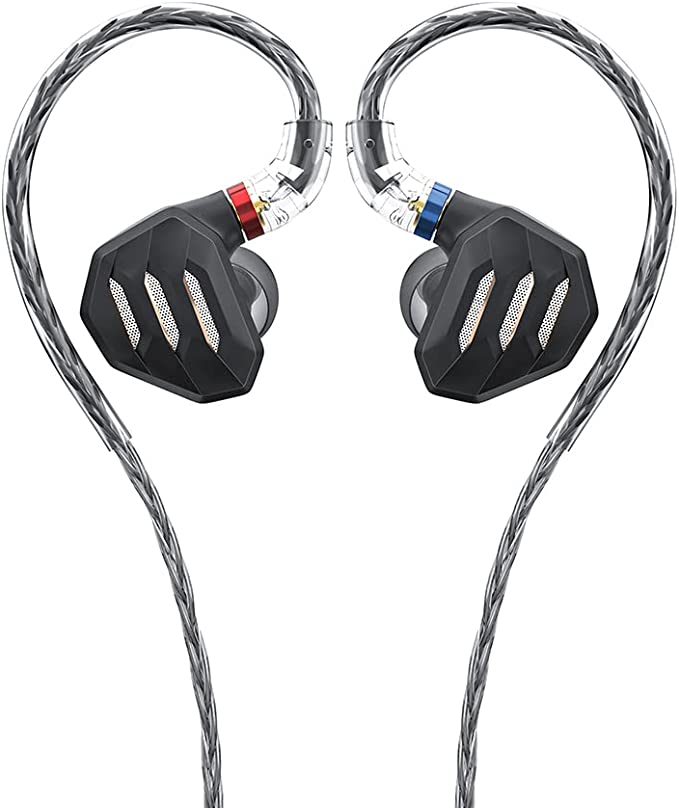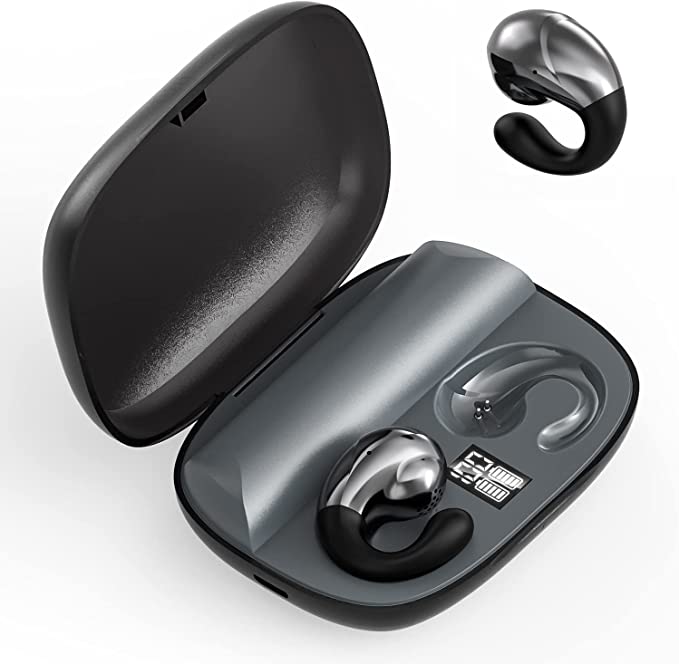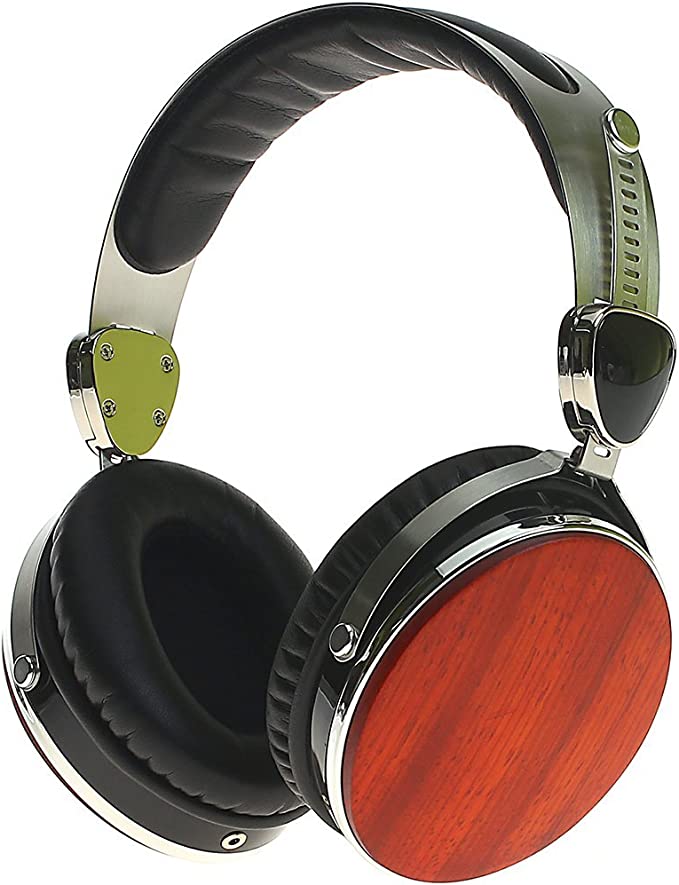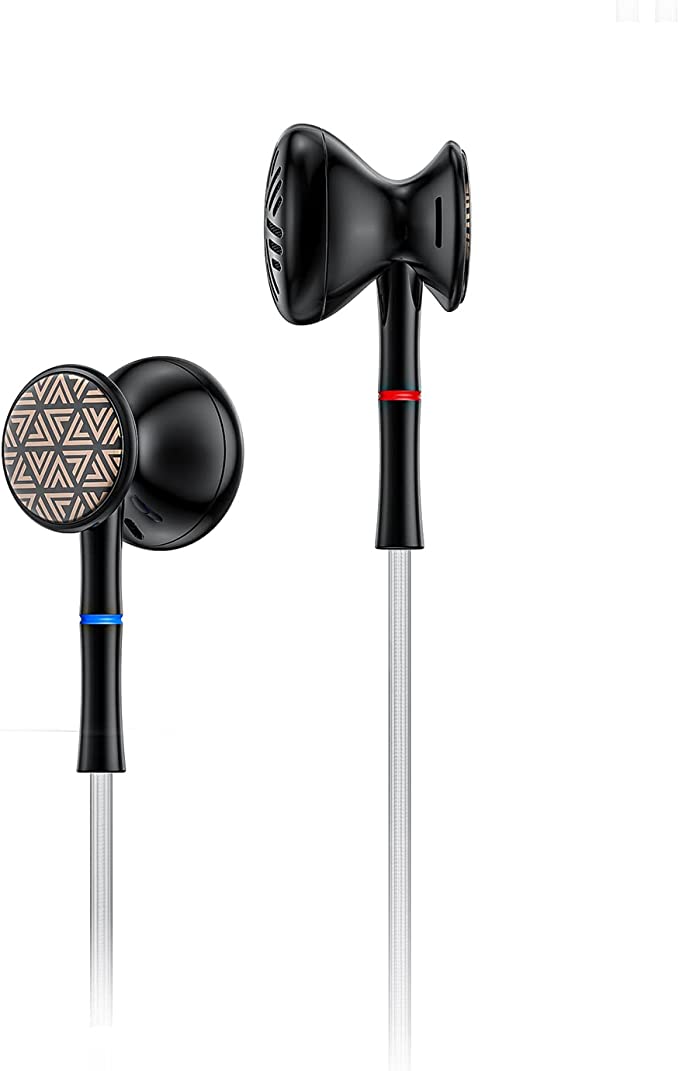FiiO FH5s Wired Earphones: Outstanding Sound Quality, Abundant Accessories
Update on June 27, 2025, 6:29 a.m.
Have you ever listened to a song you’ve known your entire life and suddenly heard a ghost-like harmony or a subtle bass line you were certain wasn’t there before? That shiver of discovery is intoxicating. It reveals that every piece of recorded music is a dense, layered landscape, a sonic world crafted with intention. The truth is, that detail was always there, buried in the mix. The real question is whether your audio equipment is a shovel sharp enough to unearth it.
This is where engineering transforms from cold science into a key that unlocks art. The FiiO FH5s in-ear monitors (IEMs) are a fascinating case study in this transformation. Forget the marketing points for a moment. Let’s put on our lab coats and peer inside to understand how a symphony of physics, material science, and acoustic design empowers you to become not just a listener, but a sonic archaeologist.

The Ensemble Within: A Symphony of Drivers
At the core of the FH5s lies a hybrid engine, a miniature orchestra composed of four distinct drivers. This isn’t about just making sound louder; it’s about assigning specialists to specific jobs. Think of it as a musical division of labor. The foundation—the chest-thumping rhythm and the rich body of the music—is handled by two separate dynamic drivers (DDs). A large 12mm driver is dedicated to the low frequencies, while a 6mm driver focuses on the midrange. These are the cellos and basses of our orchestra, masterful at moving air to create a powerful, visceral presence.
Here, we encounter our first piece of exotic science: Beryllium. The diaphragms of these drivers are plated with this remarkable element. In the world of materials, Beryllium is a superstar, possessing a ridiculously high stiffness-to-weight ratio. Imagine the chassis of a Formula 1 car: it must be incredibly rigid to handle immense forces without flexing, yet feather-light for instant acceleration. That’s Beryllium. This property allows the driver diaphragm to start and stop on a dime, reproducing a bass note with lightning-fast precision and then getting out of the way, preventing the sound from becoming a muddy, resonant mess. This is the science behind what your ears perceive as “tight,” “controlled” bass.
But an orchestra needs its soloists. For the delicate, shimmering high frequencies, the FH5s employs a renowned Knowles balanced armature (BA) driver. Originally pioneered for hearing aids, where clarity is paramount, BAs work on a different principle. Instead of a cone, they use a tiny, reed-like armature that vibrates within a magnetic field. This mechanism is exceptionally nimble, allowing it to trace the most complex and rapid high-frequency waveforms with breathtaking accuracy. It’s the virtuoso flutist of the ensemble, responsible for the airy decay of a cymbal or the subtle breathiness in a singer’s voice—details that give music its texture and life. The greatest challenge for any hybrid design is making these different musicians play in perfect harmony, a task handled by a component called the crossover, which we’ll revisit shortly.

Crafting the Concert Hall: The Magic of Acoustic Design
A world-class orchestra is wasted in a poorly designed room. Similarly, the physical housing of an IEM is a critical component of its acoustic performance. The FH5s is engineered as a miniature concert hall, and two key features define its architecture.
First is the semi-open back design. Many IEMs are fully sealed, which provides excellent noise isolation but can create a congested, “in-your-head” sound. The FH5s, however, features carefully placed vents. This design allows the drivers to “breathe,” equalizing the air pressure behind them. The acoustic result is profound: the soundstage—the perceived space and location of instruments—expands dramatically. Music no longer feels trapped between your ears but seems to exist in the space around you, mimicking the open, natural ambiance of a live performance. It’s the architectural equivalent of opening a window in a stuffy room.
Second, the walls of this concert hall must be silent. Any vibration in the earphone’s shell will color the sound, adding its own unwanted resonance. To combat this, FiiO employs its TRISHELL design. The body, composed of CNC-machined aluminum-magnesium alloy, is constructed like a three-part sandwich, rigidly locked together. This creates an acoustically inert platform, ensuring that the only vibrations reaching your ears are the ones intended by the musicians—not the ones created by the hardware itself.

At the Mixing Board: The Power of Physical Tuning
This is where you, the listener, get to step onto the podium. The FH5s features three small switches that adjust the character of the bass, mids, and treble. This isn’t a simple software EQ. These are physical switches that alter the earphone’s electronic crossover—the very component that acts as the orchestra’s conductor.
The crossover is a network of capacitors and inductors that directs the correct frequency ranges to the appropriate drivers. Flipping a switch on the FH5s is like telling the conductor, “For this next piece, I’d like the bass section to play with a bit more authority,” or “Let’s bring the vocalist forward in the mix.” Listening to a classic rock anthem? Perhaps a slight bump in the mids will make those electric guitars sing. Switching to a bass-heavy EDM track? Engage the bass switch for more visceral impact. This feature transforms listening from a passive act to an interactive experience, giving you a tangible connection to the sound-shaping process.

The Final Connection: A Highway to Your Brain
The journey of sound doesn’t end at the earphone. The path it takes to get there is equally important. The FH5s addresses this with a high-quality cable and, more importantly, a system of swappable plugs. This allows you to connect to the standard 3.5mm jack found on most devices, but also to the 2.5mm and 4.4mm balanced outputs available on dedicated audio players and amplifiers.
“Balanced audio” is a term that often seems esoteric, but the principle is simple and elegant. Think of a standard cable as a single-lane road where the audio signal and its ground reference travel together, susceptible to picking up electromagnetic interference (like radio static) along the way. A balanced cable is like a two-lane, shielded highway for each channel (left and right). It sends two versions of the signal: one normal and one inverted. The amplifier at the other end is smart enough to flip the inverted signal back and subtract it from the normal one. Since any noise picked up along the way is identical on both lanes, this subtraction process cancels the noise out completely. The audible result is a pristinely “black” background, allowing the faintest musical details to emerge from silence, and a more distinct separation between the left and right channels.
Conclusion: From Engineering to Emotion
Peeling back the layers of the FiiO FH5s reveals a beautiful convergence. Material science gives us the speed of Beryllium. Acoustic physics shapes the soundstage through a semi-open architecture. Electronic engineering provides the control of a crossover and the purity of a balanced signal. Each element is a testament to the idea that a deeper understanding of the physical world can lead to a more profound experience of the artistic one.
Ultimately, technology like this isn’t the end goal. It’s a lens. It’s an invitation to become a more curious, active listener. So, put on a pair of well-engineered earphones, close your eyes, and play that one song—the one you know by heart. You might just discover a whole new orchestra waiting to be heard.



























































